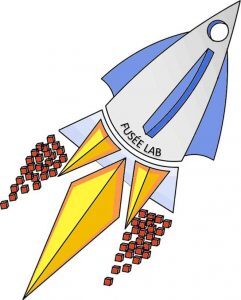The Uncharted Potential of the Blockchain

Header image was purchased on Istock.com. Protected by copyright.
The Facebook scandal involving Cambridge Analytica has highlighted possible slippages that can result from the management of personal data by companies or organizations whose primary goal is profit. Indeed, when a database is managed by a third party, updating and use of the data is not transparent. One can only hope that existing laws are being obeyed and that criminal offenders are prosecuted. To address this problem, ÉTS researchers are exploring an alternative solution: the blockchain.
Demystifying the Blockchain
Primarily known because of the cryptocurrency Bitcoin, a blockchain is a unique combination of a distributed database and cryptography. The strength of this system lies in the decentralization of multi-user data, allowing everyone to access shared information, and to reach a consensus on what is “true information” without intermediaries. No longer is there the need to trust a single organization: these are cryptographic processes that guarantee the security and integrity of the encrypted data.
The chain links together blocks that each contains multiple “transactions” (exchanges of information) between users. In the case of Bitcoin, a new block must be validated by the network nodes, called miners, through complex computational work before the chain can be integrated. The first miner who finds a proposal can present a “Proof-of-Work” and is rewarded with Bitcoin. The resulting validated block is accepted and added to the existing chain.

Architectural diagram of a blockchain
The potential benefit of a blockchain is that a secure data registry can be maintained at a fraction of the cost of databases offered by cloud providers, with more transparent and verifiable management processes. However, energy costs are enormous. Since the probability of finding a block is proportional to the computing power of each of the miners, they constantly seek to increase their power to earn rewards. The Bitcoin yield is therefore constantly decreasing because a single block is being mined every 10 minutes, leading to ever-increasing energy costs.

Bitcoin mining farm
Beyond Cryptocurrency
 Researchers at the ÉTS FUSÉE Laboratory are working to extend the blockchain concept to other sectors. A main priority of their research is to create consensus protocols that will consume much less energy. One known solution is to replace Proof-of-Work with a proof of participation, or Proof-of-Stake. In this type of system, you must have a certain number of tokens to be allowed to mine a block, and be randomly designated to do so by the system. Researchers at the FUSÉE Laboratory believe that it is possible to reduce the energy required to operate a blockchain by ten thousand to one million times by creating new consensus protocols.
Researchers at the ÉTS FUSÉE Laboratory are working to extend the blockchain concept to other sectors. A main priority of their research is to create consensus protocols that will consume much less energy. One known solution is to replace Proof-of-Work with a proof of participation, or Proof-of-Stake. In this type of system, you must have a certain number of tokens to be allowed to mine a block, and be randomly designated to do so by the system. Researchers at the FUSÉE Laboratory believe that it is possible to reduce the energy required to operate a blockchain by ten thousand to one million times by creating new consensus protocols.
Also, it is possible to deploy smart contracts, which will be executed through transactions. With these contracts, the validation and accessibility conditions of the information can be programmed to create blockchains that are much more versatile.
Applications of Public Blockchains
One sector where blockchains could be of particular interest is healthcare. In fact, a blockchain could be used to create a single electronic file containing all the diagnostic tests, laboratory tests, and prescribed medication, with obvious advantages. Moreover, it would allow each individual access to their file, while limiting access of some information to specific stakeholders, options not available in the current context. All of these privacy constraints could be managed through smart contracts.

Vibes, a research project at the FUSEE Laboratory
Another challenge that could be addressed through a blockchain is the management of information from the Internet of Things. Restrictions and traceability requirements imposed by new regulations, like the European Union’s General Data Protection Regulation (GDPR), would be much better served through the use of a blockchain. Each new piece of information added about an individual would be represented by a transaction. The person in charge of the audit would then access the chain to check that everything was done according to the rules. Better yet, the GDPR rules could be encoded in smart contracts so that only information that conforms to the law would be stored.
Applications of Private Blockchains
Consortia and business groups often need to share information securely (their supply chain management for example). To prevent this task from being performed by a single company or a third party, they can create a private blockchain. Private blockchain protocols are more lenient than public ones, especially because participants themselves have a vested interest in updating the data without further incentives.
Blockchains also present a potential solution for the authentication of official documents from academic institutions (transcripts, diplomas, etc.), where the tools to counter fraud are less reliable.

Professor Kaiwen Zhang at the ACM DEBS Conference
More Transparent Data Management
The big data era has led to a wealth of data being concentrated in the hands of companies like Google, who have disposed of it as they saw fit. Researchers at the FUSÉE Laboratory want to provide universal access to this data through blockchains, while ensuring confidentiality and security.


